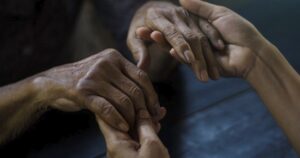According to the latest U.S. Census, minority individuals constitute about 36 percent of the population. Overall health and life expectancy have improved for most older adults in recent years, but some minority elders continue to face specific health concerns at a higher rate.
April is National Minority Health Month, a campaign to educate the public about health concerns facing racial and ethnic minorities in the United States. The campaign also encourages lawmakers to consider policies and programs that can help reduce the health disparities experienced by minority groups.
The theme for the month — Partnering for Health Equity — focuses on partnerships at the local, state, national and tribal levels. During April, the Office of Minority Health, part of the U.S. Department of Health and Human Services, will work with health advocates and others to improve well-being among minority citizens.
What are some of the specific health concerns facing minority elders?
Diabetes
Diabetes occurs significantly more often among black Americans than white Americans, and African-American people have a risk 2.5 times greater of having a limb amputated because of the disease.
Among Latino Americans, approximately twice as many individuals are affected as among the general population.
Cancer
Treatment for cancer has a success rate that is fairly consistent across races. However, black men have a death rate from the disease that is 40-percent higher than among white men, and black women have a 20-percent higher death rate from cancer.
Lung Diseases
Black Americans are 16 times more likely to die from sarcoidosis, or lung scarring, than are white Americans, and the death rate from asthma is three times higher among black individuals. Black men have lower exposure to tobacco but have a 50-percent higher likelihood of developing lung cancer than do white men.
Cardiovascular Diseases
African-American individuals suffer from a higher rate of high blood pressure and strokes than the white population. Almost 42 percent of black men and 45 percent of black women are diagnosed with elevated blood pressure.
In 2016, approximately 46 in 100,000 black women died due to strokes compared to 35 of 100,000 white women.
Life Expectancy
Among some minority populations, life expectancy is lower than among the general population. Native Americans and Native Hawaiians have a life expectancy three to four years lower than other groups, as an example. Adults over age 65 constitute more than 14 percent of the U.S. white population but only between 5 and 7 percent of Native populations.
Why Do Health Disparities Occur?
One of the key questions considered during National Minority Health Month is why some populations face higher disease and death rates. Genetics can affect certain conditions, but environment, socioeconomic status and racial disparities also play a key role. Reducing such disparities and addressing health concerns among minority elders must continue to have the attention of researchers, health care providers and government authorities.




















